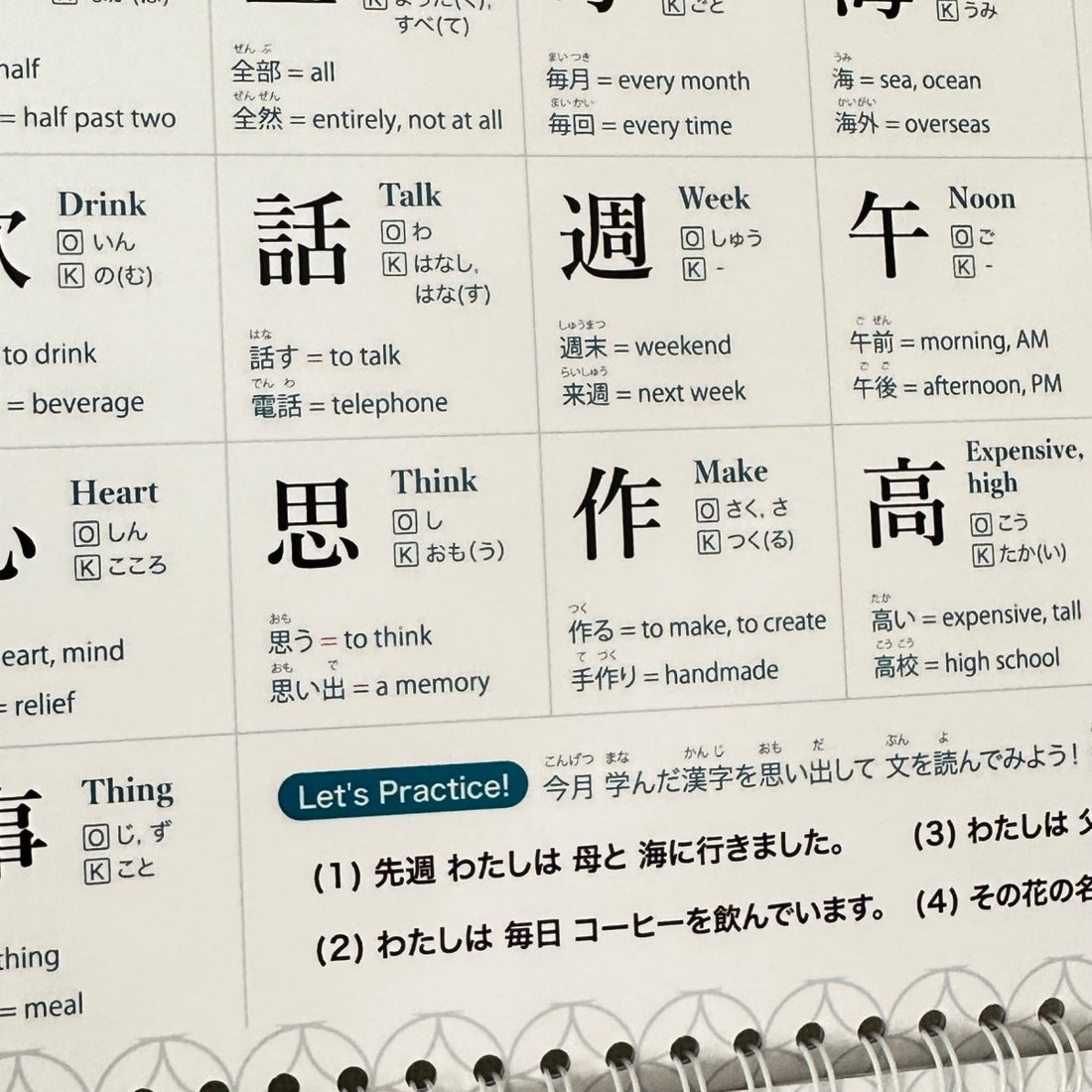
How Long Does It Take to Learn Kanji? A Beginner's Guide
Share
Ask any Japanese student what's the scariest part of learning the language, and they'll say kanji. And they're right. With a whopping 2,136 kanji labelled as "commonly-used" to learn (called the joyo kanji) after the already difficult 46 hiragana and 46 katakana, it looks like it can take a lifetime to master them all.
Well, it can. But with discipline and a smart way of learning, it can also be much shorter.
Let's see how long it takes to learn kanji.
What are Kanji?
Kanji are logographic characters borrowed from Chinese, each representing a word or concept.
The Meaning
Unlike alphabetic writing systems, kanji convey meaning at a glance.
火 conveys 'fire, and 山 conveys 'mountain'. Put together, 火山 (kazan) means 'volcano'.
Now comes the difficult part: there are 2,136 of them to learn, and not all the meanings are as clear as the two mentioned above.
The Readings
Oh, and with each kanji also comes two readings: onyomi, and kunyomi.
- Onyomi comes from the original Chinese pronunciation. It is used in compound words, meaning words composed of 2 or more kanji. Remember 火山 (kazan)? It uses the onyomi of 火 'ka', and the onyomi of 山 'san' (wait, isn't it 'zan'? Unfortunately, some sounds sometimes transform themselves when attached to others, like 's' becoming 'z'. It happens with other sounds too, like 'h' becoming 'b'. It's called rendaku. You'll see that a lot).
- Kunyomi are used in words composed of one kanji. Typically 火 by itself means 'fire' and is pronounced 'hi'. 山 means 'mountain', and is pronounced 'yama'.
The Exceptions
It would be too simple if it was only that, so remember two things:
- There are exceptions. 花 conveys 'flower' and its onyomi is 'ka'. Combined with 火, it creates 花火, meaning fireworks. It's a compound word, so surely it uses the onyomi readings, so it's pronounced 'kahi', right? Right...? Of course... not. It uses the kunyomi, and is pronounced 'hanabi' (with the rendaku, 'h' becoming 'b' in some words, remember?).
- Some kanji have multiple onyomi and kunyomi readings. I told you 花's onyomi was 'ka'. But it's also 'ke'. That's an easy one. Some kanji have many more readings.
Is it Necessary to Learn Kanji?
Short answer, yes. Unfortunately, you cannot learn Japanese without learning kanji. You need kanji to read and write Japanese. You need kanji for vocabulary, but also for names, locations, everything. Hiragana and katakana only won't be enough to let you navigate written Japanese.
Now, let's see how long it takes to learn all this.
How Long Does it Take to Learn One Kanji?
For a beginner, the initial encounter with kanji might feel overwhelming. Yet, learning your first kanji is a milestone in itself.
With focused study, a beginner can learn the basics of a single kanji—its strokes, meanings, and readings—in about 10 to 20 minutes.
This includes understanding its parts, known as radicals, which are key to deciphering kanji more efficiently as you progress. Remember the 火 kanji? It's also a radical, and is found in other kanji like 灰 (ash), 炎 (flame), 畑 (field), 燃 (burn). All of a sudden these kanji look much less scary, right?
With time, you will be able to learn each kanji character faster and faster.
How Long Does it Take to Learn All Kanji?
From there, you could say 2,136 kanji x 10 minutes on average = 356 hours. One hour a day, and you learn them all in one year. Question closed.
Maybe not. You also need to add reviewing kanji you learned - and you'll need a lot of this - as well as learning the vocabulary that use the kanji. And I'm not including grammar and other things that will need to be studied in parallel.
So unfortunately, it will take you more than a year. So, how long realistically?
Japanese kids typically learn the 2,136 joyo kanji from their first year of elementary school to their last year of junior high school. That makes 9 years in total.
But don't worry, you can do it much faster. Let's see how fast in detail.
How Many Kanji Per Day Can You Study?
Consistency is key in language learning.
Dedicating an hour each day to kanji study can yield impressive results.
Within this time, a beginner can aim to learn 2 to 5 new kanji, and review the ones learned previously. Aim at 2 to 3 kanji to be comfortable, 4 to 5 if you're confident in your studying abilities.
Actually, we created a kanji calendar that can help with that. Starting with the most common kanji, you will learn 360 kanji, or one kanji a day. It can start with any month, so you don't even need to wait for your New Year resolution to start.


Check out the Kanji Calendar here
This steady pace not only builds your kanji knowledge but also reinforces previous learnings through repetition and application.
Make sure to balance kanji study with grammar, listening, speaking, and reading. If you're studying kanji for one hour a day, you might need to aim at two to three hours of Japanese study to cover the other aspects of the language.
How Long Does it Take to Learn JLPT N5 Kanji?
For those targeting the JLPT N5, the first level of the Japanese Language Proficiency Test, you'll need to familiarize yourself with around 100 common JLPT N5 kanji.
With an hour of study each day, it's realistic to cover this range in about 20 to 30 days.
However, mastering these kanji to the point of being able to read and use them effectively in context will require at least 2-3 months of consistent effort. It takes time for a brain to assimilate a new form of writing.
If like most people, you don't have two to three hours a day to dedicate to Japanese, try to learn one new kanji a day. In 3 months, you'll know almost the 100 most common kanji.
And in 3 to 6 months, you'll be able to pass the JLPT N5 with ease.
How Many Kanji Do You Need to Read Japanese?
As you move beyond the basics, the kanji become more complex, and their use less evident.
To achieve a comfortable level of fluency, such as that required for the JLPT N2, you'll need to know around 1,000 to 1,200 kanji.
This level of proficiency enables you to navigate daily life in Japan, read simple manga, navigate general websites, and engage with more complex texts.
Reaching this milestone typically requires a dedicated study of 1.5 to 2 years. Around 4 years if you're dedicating one hour a day to learning Japanese in total.
But of course, you could also rush ahead with kanji study, and learn 1,000-1,200 kanji in a year or so, assuming a daily learning of 3 kanji a day.
How Long Does it Take to Learn All 2,136 Joyo Kanji?
If you're aiming at fluency and JLPT N1, you will need to study all 2,136 kanji.
Add between one to two additional years of study to what we mentioned previously, making 2 to 3 years of intensive study, or around 5 years of serious study that still leaves time for life.
What's the Fastest Way to Learn Kanji?
This answer will depend on your study style.
I recommend trying Wanikani. I find it's by far the best tool out there to learn kanji. It uses spaced repetition system (SRS, maybe you've heard of Anki already) to enhance memory retention. It teaches you radicals, then kanji using those radicals, then vocabulary using those kanji.
If you rush through Wanikani as fast as possible, you will around 2,000 kanji and 6,000 vocabulary words in a year and half.
You might find it difficult to hold this pace though, so plan on two to three years.
If Wanikani doesn't work for you, you might want to study the classic way, with textbooks.
Writing the kanji over and over may also with retention. It takes time, it's not fun, but it works.
Whatever the method you choose, on thing is key: consistency. Practice regularly. You will need to review your past kanji daily if you don't want to forget them. It sounds hard, but apps or tools can help.
At Hirakan, we created kanji posters to help with your study. The JLPT N5 poster contains 112 common kanji, along with meaning, and onyomi and kunyomi readings. You can stick it above your desk or in your toilet, and review your kanji effortlessly:

Check out the JLPT N5 poster here
If you've already past that level, we also created a JLPT N4 Poster with 176 kanji.
The Bottom Line
It will sound cliché, but learning kanji is a marathon, not a sprint. It requires patience, consistency, and the right strategies.
By setting realistic goals, utilizing effective study tools, and applying what you learn in context, you will be able to learn kanji in 3 to 5 years.
Try to make it a game: every kanji you learn is a new little milestone on your way to reach level 2,136 in your kanji skill.
- You might also like: How Long Does it Take to Learn Hiragana and Katakana?
Related Posts
-
![この・その・あの・どの – Using ‘This / That / Which’ with Nouns in Japanese [JLPT N5]](//hirakan.com/cdn/shop/articles/acd351ada3fe4b04ae86de788a3350b8.jpg?v=1766305268&width=170)
この・その・あの・どの – Using ‘This / That / Which’ with Nouns in Japanese [JLPT N5]
Quick Summary Meaning: この (kono), その (sono), あの (ano), どの (dono) mean “this / that / which” when they come dire...
-
![これ・それ・あれ・どれ – Saying ‘This / That / Which One’ in Japanese [JLPT N5]](//hirakan.com/cdn/shop/articles/this-that.jpg?v=1766305107&width=170)
これ・それ・あれ・どれ – Saying ‘This / That / Which One’ in Japanese [JLPT N5]
Quick Summary Meaning: これ (kore), それ (sore), あれ (are), and どれ (dore) all mean “this / that / which (one)” when you ar...
-
![か~か – Expressing Choices like “A or B” in Japanese [JLPT N5]](//hirakan.com/cdn/shop/articles/choices.jpg?v=1766304827&width=170)
か~か – Expressing Choices like “A or B” in Japanese [JLPT N5]
Quick Summary Meaning: The pattern か~か shows a simple choice: “A or B.” How to Use: Put か after each optio...
-
![~から~まで – Saying “From A to B” in Japanese [JLPT N5]](//hirakan.com/cdn/shop/articles/from-AtoB.jpg?v=1765093560&width=170)
~から~まで – Saying “From A to B” in Japanese [JLPT N5]
Quick Summary Meaning: ~から~まで shows the starting point and ending point of something: “from A to B.” It is ofte...
-
![まで – Expressing “Until” and “Up To” in Japanese [JLPT N5]](//hirakan.com/cdn/shop/articles/until-up-to.jpg?v=1765093405&width=170)
まで – Expressing “Until” and “Up To” in Japanese [JLPT N5]
Quick Summary Meaning: まで (made) means “until” or “up to” and shows a limit of time, place, number, or even act...
-
![から – Expressing “Because” and “From/Since” in Japanese [JLPT N5]](//hirakan.com/cdn/shop/articles/because-from_since.jpg?v=1765093285&width=170)
から – Expressing “Because” and “From/Since” in Japanese [JLPT N5]
Quick Summary Meaning: から shows a reason (“because”) or a starting point (“from / since”). How to Use: Put...
-
![や – Listing Examples with “And, Among Others” in Japanese [JLPT N5]](//hirakan.com/cdn/shop/articles/and.jpg?v=1765093138&width=170)
や – Listing Examples with “And, Among Others” in Japanese [JLPT N5]
Quick Summary Meaning: や connects two or more nouns and means “and” or “among other things.” It shows that your lis...
-
![か – Forming Questions and Saying “Or” in Japanese [JLPT N5]](//hirakan.com/cdn/shop/articles/ka-questions.jpg?v=1763787134&width=170)
か – Forming Questions and Saying “Or” in Japanese [JLPT N5]
Quick Summary Meaning: The particle か turns a sentence into a question, or can mean “or” when choosing between thin...
-
![も – Saying “Also” and “Too” in Japanese [JLPT N5]](//hirakan.com/cdn/shop/articles/mo-also-too_99f908e6-78d0-4f82-8319-391ef42764bc.jpg?v=1763787251&width=170)
も – Saying “Also” and “Too” in Japanese [JLPT N5]
Quick Summary Meaning: The particle も means “also,” “too,” or “even.” It shows that something is the same as someth...
-
![と – Linking 'And', 'With', and Quotations in Japanese [JLPT N5]](//hirakan.com/cdn/shop/articles/to-and-with-quotation.jpg?v=1763265110&width=170)
と – Linking 'And', 'With', and Quotations in Japanese [JLPT N5]
Quick Summary Meaning: と links things like “A and B,” marks doing something with someone, and shows a quotation (“…,”...
-
![で – Marking Where and How an Action Happens in Japanese [JLPT N5]](//hirakan.com/cdn/shop/articles/de-where-how-action-happens.jpg?v=1763264973&width=170)
で – Marking Where and How an Action Happens in Japanese [JLPT N5]
Quick Summary Meaning: で marks the location where an action happens or the means/tool/method used to do something...
-
![へ – Marking Direction ‘Toward’ in Japanese [JLPT N5]](//hirakan.com/cdn/shop/articles/he-marking-direction.jpg?v=1762667986&width=170)
へ – Marking Direction ‘Toward’ in Japanese [JLPT N5]
Quick Summary Meaning: The particle へ marks direction or “toward” a place or person. It points where something is hea...
-
![に – Marking Time, Destinations, and Recipients in Japanese [JLPT N5]](//hirakan.com/cdn/shop/articles/ni-marking-destination.jpg?v=1762667846&width=170)
に – Marking Time, Destinations, and Recipients in Japanese [JLPT N5]
Quick Summary Meaning: The particle に marks a point in time (at/on), a destination you reach (to/into), or a target/r...
-
![の – Possession and Noun Linking in Japanese [JLPT N5]](//hirakan.com/cdn/shop/articles/no-possession-and-noun-linking.jpg?v=1761961297&width=170)
の – Possession and Noun Linking in Japanese [JLPT N5]
Quick Summary Meaning: Links two nouns to show possession, belonging, or description. Often reads as “’s” or “of....
-
![を – Marking the Direct Object in Japanese [JLPT N5]](//hirakan.com/cdn/shop/articles/o-direct-object.jpg?v=1761960990&width=170)
を – Marking the Direct Object in Japanese [JLPT N5]
Quick Summary Meaning: を marks the direct object — the thing that receives the action of a verb. It’s pronounced ...
-
![が – Marking the Subject ('Who/What') in Japanese [JLPT N5]](//hirakan.com/cdn/shop/articles/ga-subject-marker_60f30f70-6ca5-47ee-9a00-3646195d7d3c.jpg?v=1761386355&width=170)
が – Marking the Subject ('Who/What') in Japanese [JLPT N5]
Quick Summary Meaning: The particle が marks the subject of a sentence and highlights new or focused information (an...
-
![は (wa) – Topic Marker and Contrast in Japanese [JLPT N5]](//hirakan.com/cdn/shop/articles/wa-topic-marker.jpg?v=1761385996&width=170)
は (wa) – Topic Marker and Contrast in Japanese [JLPT N5]
Quick Summary Meaning: Marks the topic of the sentence — what you’re talking about. Often feels like “as for...” in E...
-
![じゃない・ではありません – Expressing 'Is/Was Not' in Japanese [JLPT N5]](//hirakan.com/cdn/shop/articles/janai-dehaarimasen_2594963b-531e-4f4d-a9b0-361010e0a720.jpg?v=1760865884&width=170)
じゃない・ではありません – Expressing 'Is/Was Not' in Japanese [JLPT N5]
Quick Summary Meaning: The negative of the copula “to be.” Say “is not” or “was not” with nouns and na-adjectives. Ho...
-
![だ・です/だった・でした – Saying ‘to be’ in Japanese [JLPT N5]](//hirakan.com/cdn/shop/articles/da-desu-datta-deshita_58bbc732-53fd-48da-83c7-4e477e7cc0b2.jpg?v=1760864506&width=170)
だ・です/だった・でした – Saying ‘to be’ in Japanese [JLPT N5]
Quick Summary Meaning: The Japanese copula — the basic “to be.” It links a topic to a noun or a na-adjective to state...
-
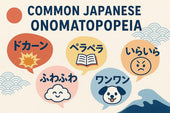
Common Japanese Onomatopoeia: Essential Words You’ll Hear Everywhere
If you spend any time in Japan, you’ll hear onomatopoeia everywhere: on TV, in everyday conversations, in manga, and ...
-
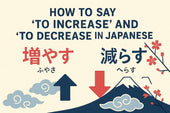
How to Say “To Increase” and “To Decrease” in Japanese: With Examples
You've noticed there are multiple ways to say “to increase” or "to decrease" in Japanese. Between transitive and intr...
-
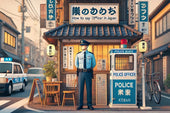
How to Say "Police Officer" in Japanese: Common Terms and Slang
There are several ways to say "police officer" in Japanese, and each one has a different level of formality and usage...
-
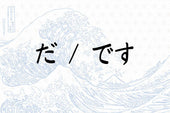
Understanding だ (da) and です (desu) in Japanese: Meaning and Usage
When learning Japanese, one of the first things you’ll come across is だ (da) and です (desu). These words don’t have a ...
-
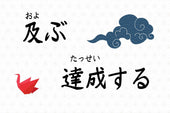
Difference Between 及ぶ (およぶ) and 達成する (たっせいする)
Both 及ぶ and 達成する can relate to "reaching" or "achieving" something, but they have distinct nuances and usage contexts...
-

JLPT N5 Study Guide: A Beginner's Roadmap to Acing the Test
If you’ve just started learning Japanese and are aiming to ace the JLPT N5, you’ll need a solid study guide to help y...
-
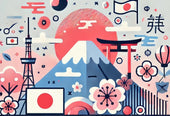
Beginner's Guide to Japanese Particles: Learn the Basics
TL;DR: Japanese particles are crucial for structuring sentences, acting like conjunctions or prepositions in English...
-

JLPT N5 Vocabulary List - All 748 Words You Need to Know
Vocabulary is the foundation of any language, and Japanese is no exception. The more you know, the better. Over time ...
-
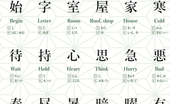
JLPT N4 Kanij List - All 176 Characters You Need To Know
After mastering the JLPT N5 kanji, you're ready to take your Japanese kanji game to the next level. JLPT N4. Let's go...
-
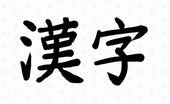
Kanji For Kanji - 漢字
Inception time. Which kanji compose the kanji of "kanji"? The kanji for "kanji" is actually pretty straightforward. I...
-

How to Memorize Katakana Easily: 9 Tips for Beginners
For those diving into Japanese, mastering hiragana and katakana is the first significant challenge. While hiragana o...
-
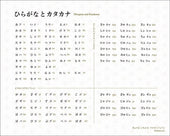
Complete Hiragana and Katakana Chart With All 112 Characters
The very first step for everybody who wants to learn Japanese is to study the hiragana and katakana chart (before lea...
-
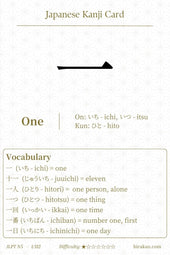
JLPT N5 Kanji: Kanji For One 一 (ichi)
Probably one the most simple kanji to remember, the kanji for 'one' is simply written '一'. Let's see its readings and...
-
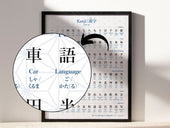
Is it Necessary to Learn Kanji? The Last Answer You'll Ever Need
Many beginners in Japanese wonder whether they should really learn kanji. I know this, because I also wondered when s...
-

How Long Does it Take to Learn Hiragana and Katakana?
As a beginner in Japanese, your first step is diving into the alphabets of Hiragana and Katakana. These are the build...
-

13 Best YouTube Channels to Learn Japanese, From Beginner to Intermediate
YouTube can be an incredible resource for learning Japanese. And best of all, it's free. So we've compiled a list of ...
-
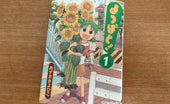
Top 10 Manga for Japanese Language Learners: From Beginners to Intermediates!
If you're learning Japanese, chances are you're interested in manga. So instead of reading texts about Tanaka-san s...
-
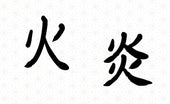
Kanji for 'Fire' in Japanese: 火 or 炎?
Welcome to our enlightening exploration of Japanese kanji! Today, we're igniting our understanding of a primal force ...
-
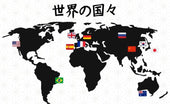
The Complete Guide to Country Names in Japanese: Say and Pronounce Them Right!
Whether you're planning a trip, learning Japanese, or just curious about how different countries are represented in a...
-
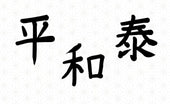
Kanji for Peace: 平, 和, 泰 - The Symbols of Harmony
You might be wondering what are the Japanese symbols for 'Peace'. In this article, we're diving deep into this univer...
-
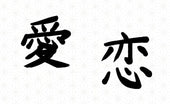
Kanji for 'Love': How and When to Use 愛 and 恋
Welcome to our journey into the world of Japanese kanji! Today, we're delving into one of the most heartwarming and p...
-
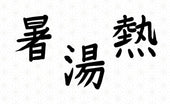
Kanji for 'Hot' in Japanese: 暑, 湯, and 熱 - A Comprehensive Guide
Welcome to our journey into the world of Japanese kanji! Today, we're going to delve into an exciting and essential c...
-
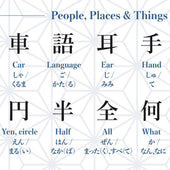
JLPT N5 Kanji List - All 112 Characters You Need To Know
Below we've listed all 112 JLPT N5 level kanji along with their English meaning, readings, and two accompanying vocab...
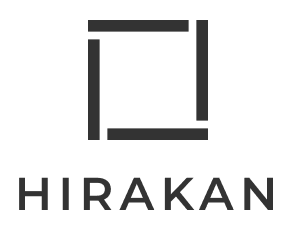
![この・その・あの・どの – Using ‘This / That / Which’ with Nouns in Japanese [JLPT N5]](http://hirakan.com/cdn/shop/articles/acd351ada3fe4b04ae86de788a3350b8.jpg?v=1766305268&width=170)
![これ・それ・あれ・どれ – Saying ‘This / That / Which One’ in Japanese [JLPT N5]](http://hirakan.com/cdn/shop/articles/this-that.jpg?v=1766305107&width=170)
![か~か – Expressing Choices like “A or B” in Japanese [JLPT N5]](http://hirakan.com/cdn/shop/articles/choices.jpg?v=1766304827&width=170)
![~から~まで – Saying “From A to B” in Japanese [JLPT N5]](http://hirakan.com/cdn/shop/articles/from-AtoB.jpg?v=1765093560&width=170)
![まで – Expressing “Until” and “Up To” in Japanese [JLPT N5]](http://hirakan.com/cdn/shop/articles/until-up-to.jpg?v=1765093405&width=170)
![から – Expressing “Because” and “From/Since” in Japanese [JLPT N5]](http://hirakan.com/cdn/shop/articles/because-from_since.jpg?v=1765093285&width=170)
![や – Listing Examples with “And, Among Others” in Japanese [JLPT N5]](http://hirakan.com/cdn/shop/articles/and.jpg?v=1765093138&width=170)
![か – Forming Questions and Saying “Or” in Japanese [JLPT N5]](http://hirakan.com/cdn/shop/articles/ka-questions.jpg?v=1763787134&width=170)
![も – Saying “Also” and “Too” in Japanese [JLPT N5]](http://hirakan.com/cdn/shop/articles/mo-also-too_99f908e6-78d0-4f82-8319-391ef42764bc.jpg?v=1763787251&width=170)
![と – Linking 'And', 'With', and Quotations in Japanese [JLPT N5]](http://hirakan.com/cdn/shop/articles/to-and-with-quotation.jpg?v=1763265110&width=170)
![で – Marking Where and How an Action Happens in Japanese [JLPT N5]](http://hirakan.com/cdn/shop/articles/de-where-how-action-happens.jpg?v=1763264973&width=170)
![へ – Marking Direction ‘Toward’ in Japanese [JLPT N5]](http://hirakan.com/cdn/shop/articles/he-marking-direction.jpg?v=1762667986&width=170)
![に – Marking Time, Destinations, and Recipients in Japanese [JLPT N5]](http://hirakan.com/cdn/shop/articles/ni-marking-destination.jpg?v=1762667846&width=170)
![の – Possession and Noun Linking in Japanese [JLPT N5]](http://hirakan.com/cdn/shop/articles/no-possession-and-noun-linking.jpg?v=1761961297&width=170)
![を – Marking the Direct Object in Japanese [JLPT N5]](http://hirakan.com/cdn/shop/articles/o-direct-object.jpg?v=1761960990&width=170)
![が – Marking the Subject ('Who/What') in Japanese [JLPT N5]](http://hirakan.com/cdn/shop/articles/ga-subject-marker_60f30f70-6ca5-47ee-9a00-3646195d7d3c.jpg?v=1761386355&width=170)
![は (wa) – Topic Marker and Contrast in Japanese [JLPT N5]](http://hirakan.com/cdn/shop/articles/wa-topic-marker.jpg?v=1761385996&width=170)
![じゃない・ではありません – Expressing 'Is/Was Not' in Japanese [JLPT N5]](http://hirakan.com/cdn/shop/articles/janai-dehaarimasen_2594963b-531e-4f4d-a9b0-361010e0a720.jpg?v=1760865884&width=170)
![だ・です/だった・でした – Saying ‘to be’ in Japanese [JLPT N5]](http://hirakan.com/cdn/shop/articles/da-desu-datta-deshita_58bbc732-53fd-48da-83c7-4e477e7cc0b2.jpg?v=1760864506&width=170)






















